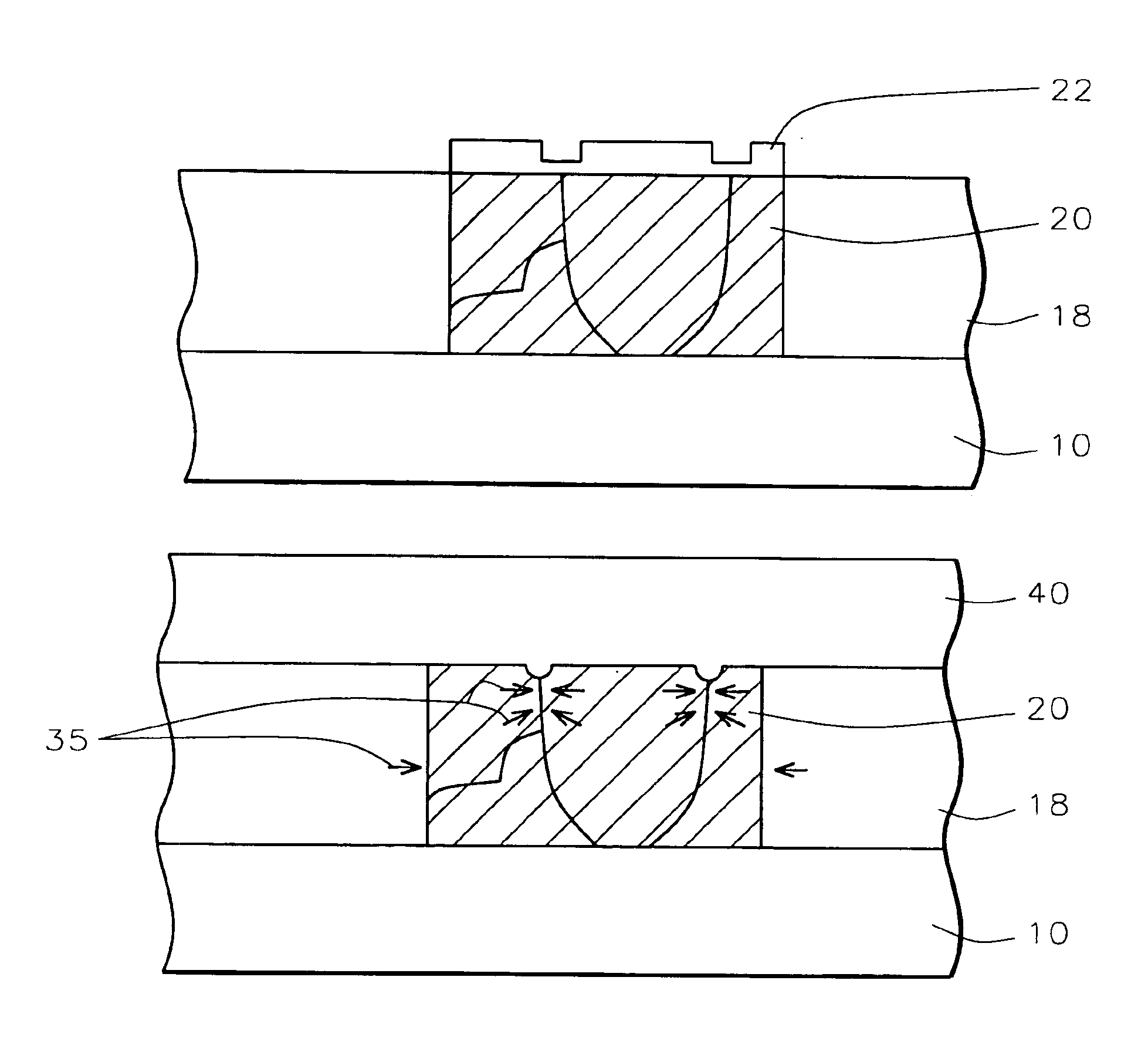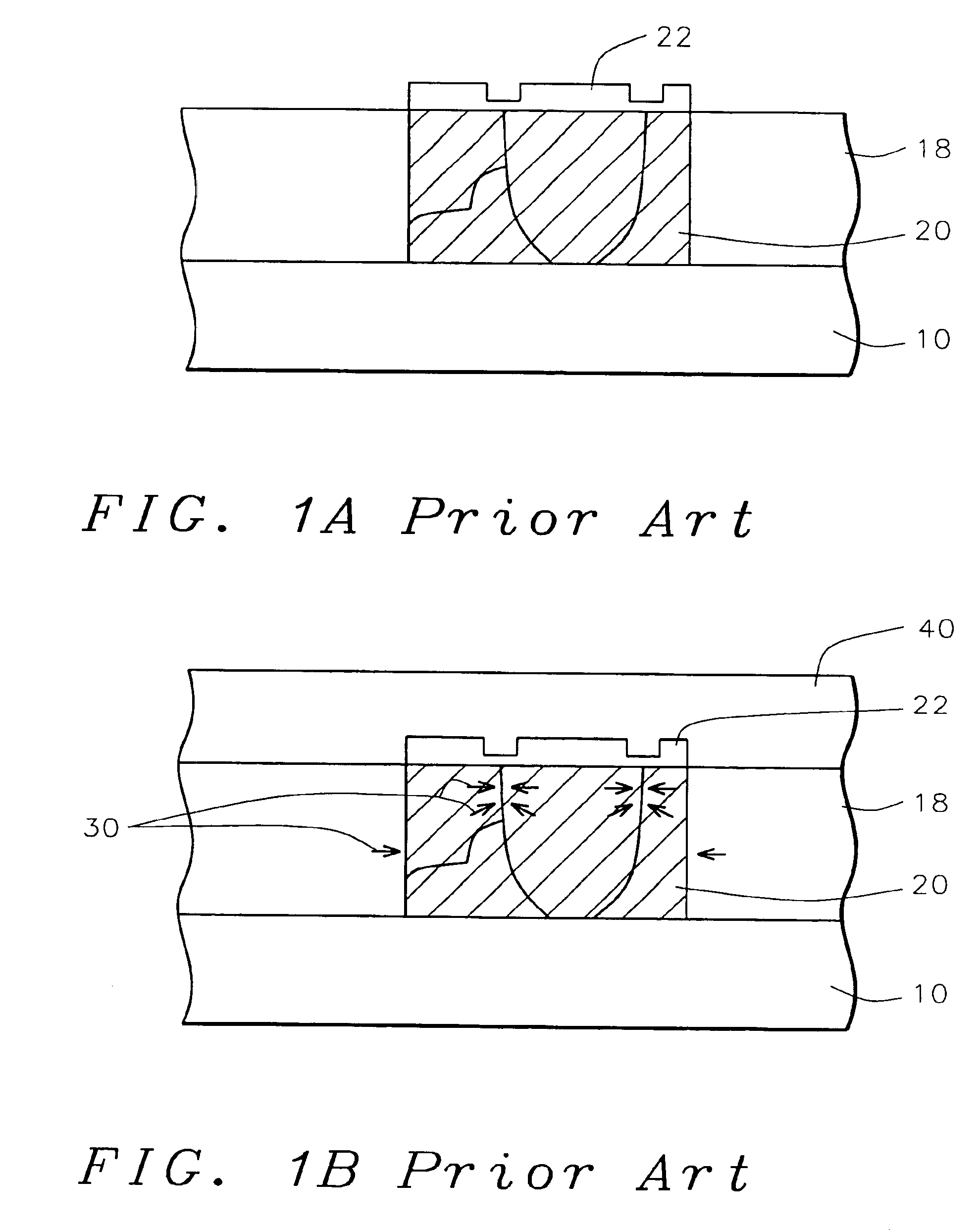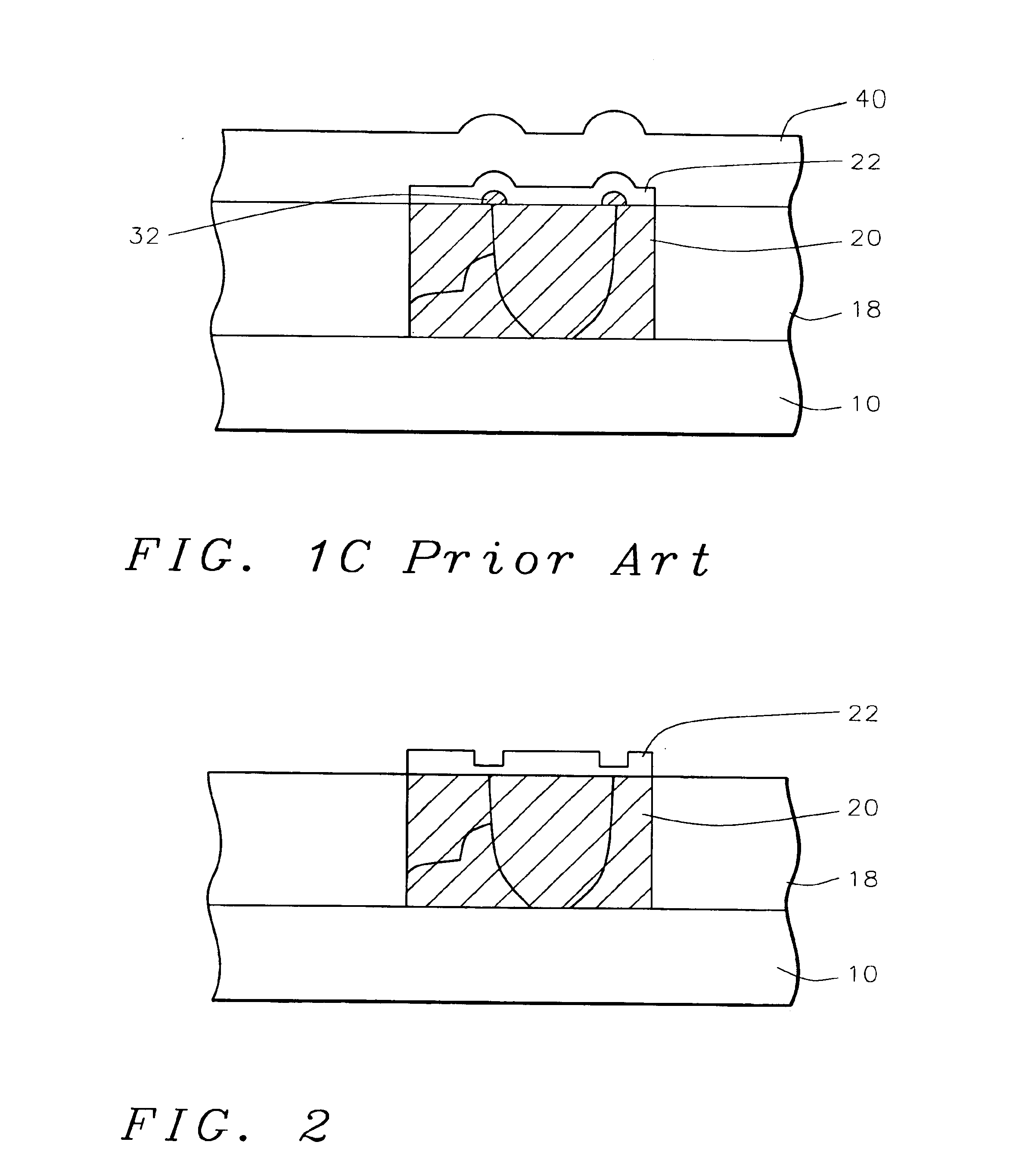Solution for copper hillock induced by thermal strain with buffer zone for strain relaxation
a technology of thermal strain and buffer zone, applied in the direction of basic electric elements, electrical equipment, semiconductor devices, etc., can solve the problems of reducing copper reliability and other defects that cannot be detected accurately, and achieve the effect of reducing copper hillocks and preventing formation of copper hillocks
- Summary
- Abstract
- Description
- Claims
- Application Information
AI Technical Summary
Benefits of technology
Problems solved by technology
Method used
Image
Examples
Embodiment Construction
[0015]The present invention provides a method for reducing copper hillocks. Hillocks reduce copper reliability and confuse defect inspection tools. Copper hillock generation after capping layer deposition is caused by compressive-thermal stress on the copper causing a vertical thermal strain on the copper surface.
[0016]Referring now more particularly to FIG. 2, there is illustrated a portion of a partially completed integrated circuit device. There is shown a semiconductor substrate 10, preferably composed of monocrystalline silicon. Semiconductor devices structures may be formed in and on the semiconductor substrate. For example, gate electrodes and source / drain regions as well as lower levels of metallization, not shown, may be formed.
[0017]An insulating layer 18, composed of silicon dioxide, borophosphosilicate glass (BPSG), borosilicate glass (BSG), phosphosilicate glass (PSG), or the like, is deposited over the semiconductor structures to a thickness of between about 6000 and 1...
PUM
 Login to View More
Login to View More Abstract
Description
Claims
Application Information
 Login to View More
Login to View More - R&D
- Intellectual Property
- Life Sciences
- Materials
- Tech Scout
- Unparalleled Data Quality
- Higher Quality Content
- 60% Fewer Hallucinations
Browse by: Latest US Patents, China's latest patents, Technical Efficacy Thesaurus, Application Domain, Technology Topic, Popular Technical Reports.
© 2025 PatSnap. All rights reserved.Legal|Privacy policy|Modern Slavery Act Transparency Statement|Sitemap|About US| Contact US: help@patsnap.com



